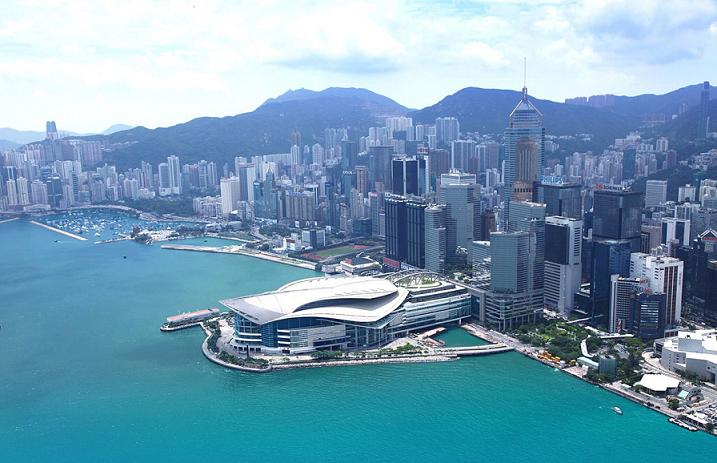 Art Basel in Hong Kong has made it to its second year. 2013 marked the first year of Art Basel in Hong Kong, with 60,000 visitors and 245 participating galleries. The approximate 50:50 split between Asian and Western exhibitors at the fair highlights the global interest in the Chinese art market, which comes as no surprise given China’s ranking in 2013 as the world’s second largest art market by value. Approximately 70% of that value has been produced by art sales in the auction sector, with the remaining 30% coming from the gallery and private sector. This year’s Art Basel in Hong Kong taking place from May 15-18th will again serve as a venue to strengthen this minority sector.[1]
Art Basel in Hong Kong has made it to its second year. 2013 marked the first year of Art Basel in Hong Kong, with 60,000 visitors and 245 participating galleries. The approximate 50:50 split between Asian and Western exhibitors at the fair highlights the global interest in the Chinese art market, which comes as no surprise given China’s ranking in 2013 as the world’s second largest art market by value. Approximately 70% of that value has been produced by art sales in the auction sector, with the remaining 30% coming from the gallery and private sector. This year’s Art Basel in Hong Kong taking place from May 15-18th will again serve as a venue to strengthen this minority sector.[1]
For art collectors visiting Art Basel in Hong Kong, there are terms of sale, tax, shipping, storage and insurance issues to consider before purchasing art at the fair.
Purchase Documentation
As with all art purchases, art collectors purchasing at Art Basel in Hong Kong should insist on more than an invoice from the galleries from whom they are purchasing art. The gallery selling the work should represent and warrant in writing to the purchaser that the work is authentic and that good and marketable title to the work is being transferred to the purchaser free and clear of all liens, claims and encumbrances. Prior to purchasing a work, an art collector should also request that the seller provide him or her with the work’s provenance information and with a professional condition report of the work.
Freeport
Art Basel in Hong Kong is one of several art fairs in China. Art Basel in Hong Kong’s advantage over other Chinese art fairs such as Art Beijing and ART 021 in Shanghai, is the favorable tax treatment in Hong Kong. Hong Kong is a free port that does not provide barriers to trade. Hong Kong does not levy a VAT or sales tax on the exchange of tangible personal property, and Hong Kong does not impose taxes on imports and exports. Art collectors should also consider the customs issues related to the country into which they wish to import the art they have purchased at Art Basel in Hong Kong. There may be duties or fees charged by the destination country and proof of proper importation should always be obtained.
Shipping and Storage
All artwork purchased at Art Basel in Hong Kong should be packed and shipped using fine art shippers. International fine art shipping companies, such as Dietl International, will often team up with fine art shippers based in Asia, such as Helu-Trans Group and Michelle International Transport Company Limited, to arrange for shipment from Art Basel in Hong Kong. Relying on international fine art shipping companies with offices in an art collector’s destination country to coordinate shipment with local shippers is often the safest method of protecting art during transit.
Hong Kong has fine art storage facilities to service the needs of art collectors who are not ready to ship their purchased works out of Hong Kong immediately after the art fair. Michelle International Transport Company Limited and Beautiful Mind Art & Consulting Ltd. are two companies which provide high security storage facilities for art, antiques and collectibles in Hong Kong. Michelle International has been providing quality art services since 1978, and Beautiful Minds has a new facility that was created in 2013 by Vinci Chang, former Vice President and Head of Sale in the Asian 20th Century and Contemporary Art department for Christie’s in Hong Kong. These facilities have temperature and humidity controlled storage rooms, private viewing rooms, and staff with museum experience handling the art.
Insurance
Art collectors buying art at Art Basel in Hong Kong should instruct their insurance brokers to add the purchased works to their list of insured works right away if they have a scheduled policy.  Galleries at the fair may not insure a work after it has been purchased, unlike in the United States where a gallery will usually insure a work until it is delivered to the purchaser’s home or storage facility. When purchasing art at the fair, art collectors should always ask who is responsible for insuring the art while in transit.
Galleries at the fair may not insure a work after it has been purchased, unlike in the United States where a gallery will usually insure a work until it is delivered to the purchaser’s home or storage facility. When purchasing art at the fair, art collectors should always ask who is responsible for insuring the art while in transit.
[1] Statistics from TEFAF Art Market Report 2014 by The European Fine Art Foundation




 Saving...
Saving...